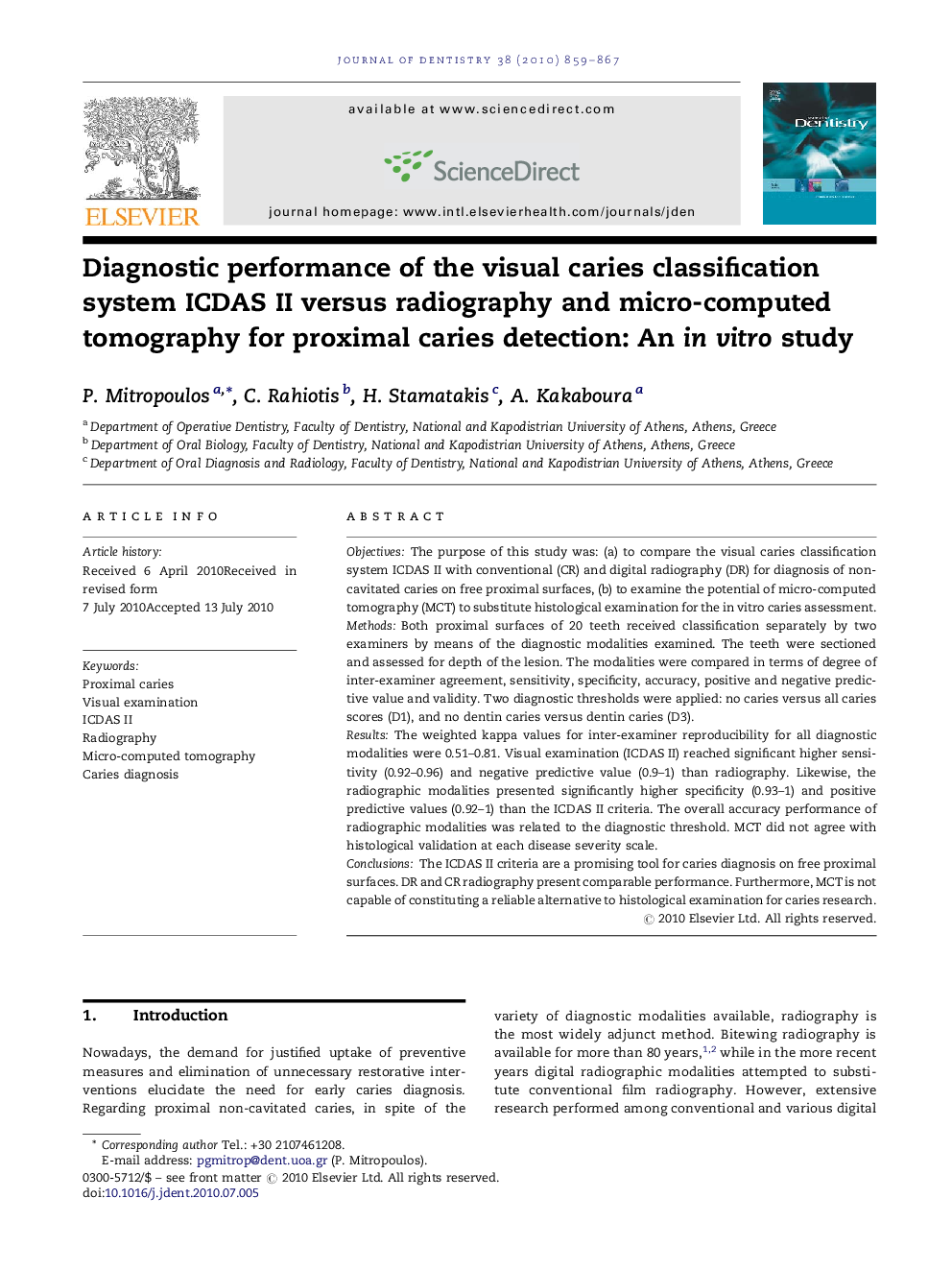| Article ID | Journal | Published Year | Pages | File Type |
|---|---|---|---|---|
| 3146339 | Journal of Dentistry | 2010 | 9 Pages |
ObjectivesThe purpose of this study was: (a) to compare the visual caries classification system ICDAS II with conventional (CR) and digital radiography (DR) for diagnosis of non-cavitated caries on free proximal surfaces, (b) to examine the potential of micro-computed tomography (MCT) to substitute histological examination for the in vitro caries assessment.MethodsBoth proximal surfaces of 20 teeth received classification separately by two examiners by means of the diagnostic modalities examined. The teeth were sectioned and assessed for depth of the lesion. The modalities were compared in terms of degree of inter-examiner agreement, sensitivity, specificity, accuracy, positive and negative predictive value and validity. Two diagnostic thresholds were applied: no caries versus all caries scores (D1), and no dentin caries versus dentin caries (D3).ResultsThe weighted kappa values for inter-examiner reproducibility for all diagnostic modalities were 0.51–0.81. Visual examination (ICDAS II) reached significant higher sensitivity (0.92–0.96) and negative predictive value (0.9–1) than radiography. Likewise, the radiographic modalities presented significantly higher specificity (0.93–1) and positive predictive values (0.92–1) than the ICDAS II criteria. The overall accuracy performance of radiographic modalities was related to the diagnostic threshold. MCT did not agree with histological validation at each disease severity scale.ConclusionsThe ICDAS II criteria are a promising tool for caries diagnosis on free proximal surfaces. DR and CR radiography present comparable performance. Furthermore, MCT is not capable of constituting a reliable alternative to histological examination for caries research.
